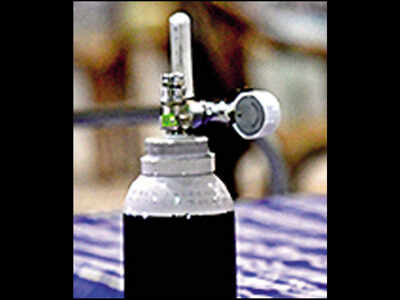- News
- City News
- chandigarh News
- Punjab CM seeks more oxygen tankers from Centre to meet growing demand
Punjab CM seeks more oxygen tankers from Centre to meet growing demand

Punjab has a 195 MT allocation from various plants in other states, but the actual supply received over the past 7 days has been 110-120 MT daily, which has also been erratic, the CM noted (Representative image)
CHANDIGARH: Punjab chief minister Capt Amarinder Singh on Monday appealed to the Centre for more oxygen tankers to be made available to the state as it did not have enough tankers to transport the lifesaving gas.
The chief minister, in a Covid review meeting, said the state urgently needed more tankers, as it had only 15 at its disposal at the moment, with two more likely to come in by Tuesday. These, he said, were not enough to handle the requirement for transporting oxygen supplies coming in from other states.
Punjab has a 195 MT allocation from various plants in other states, but the actual supply received over the past 7 days has been 110-120 MT daily, which has also been erratic, the CM noted. In this period, the number of patients on oxygen support has gone up from 4,000 to around 9,000. He added though the state government’s steps to monitor and streamline supplies through its control rooms has helped in keeping things stable, the situation remained fluid and a matter of concern, he added. The current consumption of oxygen in the state is more than 225MT daily, while the average increase in demand every day is 15-20%.
Punjab chief secretary Vini Mahajan said in the meeting that in addition to the shortage of trucks available with transporters in the state, the fact that a tanker took 4-5 days to bring 90MT quota allocation from Bokaro plant made things worse. Unless the state gets more tankers, the situation could aggravate, she added.
In addition to 90 MT from Bokaro, the state’s current allocation is 60MT from a plant in Baddi, 20MT from a plant in Panipat, 15MT from a plant in Roorkee and 10MT from a plant in Dehradun. Around 80 MT is generated daily from the state and steps are being taken to increase production on a continuous basis, she said, adding that this was not sufficient to meet the increasing demand.
The chief minister, in a Covid review meeting, said the state urgently needed more tankers, as it had only 15 at its disposal at the moment, with two more likely to come in by Tuesday. These, he said, were not enough to handle the requirement for transporting oxygen supplies coming in from other states.
Punjab has a 195 MT allocation from various plants in other states, but the actual supply received over the past 7 days has been 110-120 MT daily, which has also been erratic, the CM noted. In this period, the number of patients on oxygen support has gone up from 4,000 to around 9,000. He added though the state government’s steps to monitor and streamline supplies through its control rooms has helped in keeping things stable, the situation remained fluid and a matter of concern, he added. The current consumption of oxygen in the state is more than 225MT daily, while the average increase in demand every day is 15-20%.
Punjab chief secretary Vini Mahajan said in the meeting that in addition to the shortage of trucks available with transporters in the state, the fact that a tanker took 4-5 days to bring 90MT quota allocation from Bokaro plant made things worse. Unless the state gets more tankers, the situation could aggravate, she added.
In addition to 90 MT from Bokaro, the state’s current allocation is 60MT from a plant in Baddi, 20MT from a plant in Panipat, 15MT from a plant in Roorkee and 10MT from a plant in Dehradun. Around 80 MT is generated daily from the state and steps are being taken to increase production on a continuous basis, she said, adding that this was not sufficient to meet the increasing demand.
FacebookTwitterLinkedinEMail
end of article
Trending Topics
Top Stories Right Now
- indiaSigns of Covid slowdown in Gujarat, Delhi, Maharashtra, Punjab, UP: Government
- indiaSupreme Court rejects EC plea to limit court reporting by media
- india11 killed in Bengal post-poll violence, Centre seeks report
- indiaSII, Bharat Biotech got advance of Rs 2,500cr for 16 crore doses: Govt
- indiaLive: New Covid cases may peak today, say experts
Quick Links
Delhi Air PollutionDelhi TemperatureChennai WeatherBangalore TemperatureCovid vaccination centres in DelhiCoronavirus in DelhiRTPCR test in GurgaonHyderabad RainPollution level in BangaloreDelhi SmogDelhi TemperatureNoida AQIGurgaon AQI todayFire in MumbaiMumbai RainsCovid 19 RT PCR Test in NoidaDelhi AQI todaySrinagar encounter